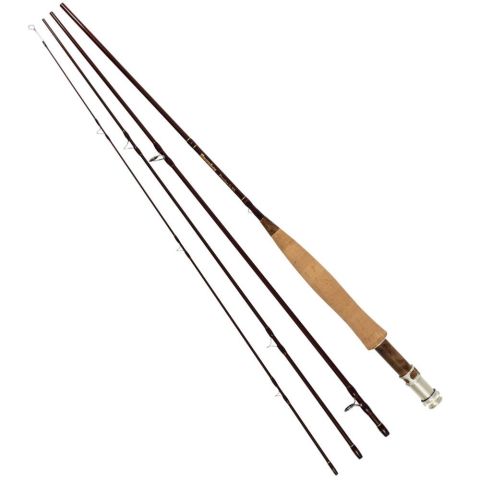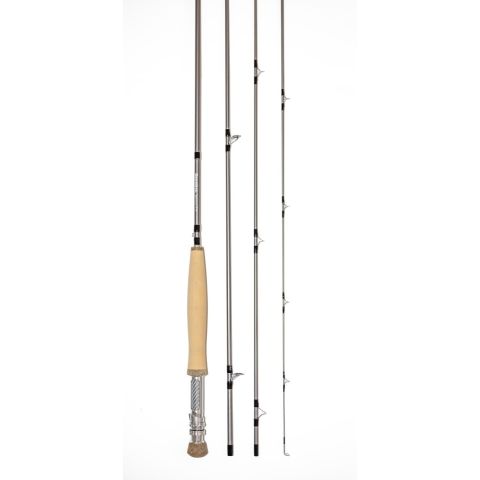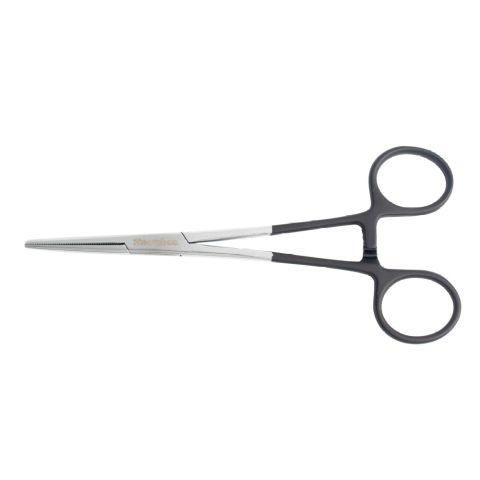Snowbee ambassador and England international fly fisher James Atkinson explores the fascinating history of grayling in the UK, the best rivers to fish, essential tackle, flies, and techniques.
Often called the “Lady of the Stream”, the grayling (Thymallus thymallus) has held a special place in the hearts of anglers for centuries. Introduced to the UK’s rivers as far back as the 19th century, primarily by Victorian anglers who valued them as both a sporting quarry and a fine table fish, grayling have since established thriving populations across much of England, Wales, and Scotland.
Although at times regarded as a “nuisance” by trout anglers in chalk streams, grayling are now celebrated as one of the UK’s premier game species. Their elegance, distinctive scarlet-tipped sail-like dorsal fin, and willingness to rise to a fly even in the coldest months make them my favourite species to target during the autumn and winter.
The official grayling season in the UK varies, but is generally from the 16th of June until the 14th of March (check your local bylaws on the Environment Agency website). The UK is blessed with a wealth of grayling rivers. The famous chalk streams, such as the River Test, Itchen and Avon, provide pristine habitats, while northern rivers like the Wharfe, Ure and Eden offer some of the best wild grayling sport in Europe.
In Wales, the Dee stands out as a world-class venue, having hosted numerous international competitions, and Scotland’s River Tay, Tweed and Annan systems also hold grayling of remarkable size. However, grayling do occupy many less infamous river systems such as the Yorkshire Calder, Don and Lancashire Calder. These systems, although not known for fish size, make up for it in fish numbers.
Current British Grayling Record
The current British record for a wild grayling is 4lb 8oz, caught by Simon Ellis in 2019 on the River Frome in Dorset.
Grayling of this size are uncommon, with a 50cm fish or one of over 3lb considered a large specimen. On some systems, though, you might find a few in one session. Rivers such as the Test, Avon and some of the northern freestone rivers do hold very large numbers of fish, too, and can produce over 100 fish on a red-letter day for the accomplished angler.

What are the best methods for grayling?
Grayling are among the most obliging game fish, readily responding to a wide range of fly fishing techniques. Due to their physiology, with their top lip protruding over their lower, they are primarily bottom feeders and will very happily take a nymph. However, when there is ample fly life and surface activity, they are very keen to rise to a dry fly. The most successful method will vary through the seasons, with nymphs generally working better in the colder months and the dry fly coming into its own from July to around October.
Grayling can be a cunning fish and display quite different behaviours to trout, most notably their preferred feeding lies in the river. Trout generally like to reside close to cover or structure and will often hug riverbanks or any large obstruction in the river, including rocks and weed beds. Grayling, however, prefer to sit over gravel and this often means they will sit in nice even flows in the middle of the river, sometimes in very shallow water. Commonly they will shoal together, so where you catch one grayling you might be able to pick up a handful more if you haven’t spooked them.
In a typical pool, you will ‘usually’ find grayling sat in the tail or in the back end of the riffle, whereas trout will often be found near the head of the run. Grayling are less opportunistic than trout, which can make them surprisingly frustrating to fish for. If they are not feeding, then often there is nothing you can do to tempt them, whereas a trout can frequently be tempted into eating if it is not spooked. On the other hand, grayling can be very easy to catch when you find them in the right mood and will occasionally take any daft arrangement of a fly pattern.
If I had to pick two methods to target grayling with, it would be either a single dry fly for when they can be found rising or a euro nymphing set-up with two nymphs, which could be modified to a fishing dry dropper by simply swapping the top nymph for a large dry fly.;

What fly rod for grayling?
Grayling are an incredibly versatile species; you can catch them using almost any method, allowing you to choose the style of fishing that brings you the most enjoyment. That being said, the rod you select will need to suit your method of choice. The two most versatile rods for grayling fishing in my opinion, are a 9ft-10ft #3 or #4 for any fly line work and a 10-11ft #3 for nymphing. My personal choice is the 9ft 6in #3 Snowbee Prestige due to it is lightweight design with a soft tip to protect light tippet material, but with plenty of strength down the blank to have control over your cast and play larger specimens.
For nymphing, I am currently using a 10ft 6in #3 rod that the Snowbee team and I are developing (keep your eyes peeled for that!) However, any similar rod with a fast recovery and sensitive tip will do the job.
Essential tackle items for grayling:
- A pair of polarised sunglasses, I have been using the Snowbee Spectre glasses to great effect. These will allow you to see fish sitting on the gravel bars that can then be sight fished, but also allow you to spot any likely areas or features such as depth changes.
- A range of fluorocarbon tippet, running from 0.10-0.14mm in diameter, this will cover all situations from low, clear water to the high, more coloured water you will likely find in the winter months.
- A lightweight pan landing net, such as the Snowbee 3-in-1 net. A landing net is vital when unhooking fish, since grayling rarely stay still long enough to be safely handled.
- Chest waders – Essentials not only for wading in the water, especially in the winter months, but also allowing you to move and kneel on the bank without worrying about getting wet. Waders will allow you to access parts of the river otherwise inaccessible from the bank, which is vital for success. My choice is the Spectre Breathable waders – tough, reliable and with plenty of room. Plus – they won’t break the bank.
- Forceps – makes getting out small flies a doddle.
- Spare rod – I usually take two rods with me, one set up with dries and one with nymphs, so I can cover all eventualities with ease.
- Thermometer – for testing the water temperature, as this will dictate the fish behaviour and fly life. Generally, colder water means brighter and larger flies, warmer, smaller, duller flies. If the water is very cold, 5 degrees or so, it will also mean the fish are likely in deeper water.

What are the best flies for grayling?
The big question everyone want’s to know. The answer is whatever you are confident with, but to catch more fish, you will need to match what they are feeding on. Sometimes a bright fly can also be very attractive to grayling, particularly in cold water. My essentials would therefore be:
- Pink shrimp
- Hares’ ears in a few variations, sizes and weights
- Red tag nymph
- Pheasant tail nymph, again in a few variations and weights
- Small f-flies
- Split-wing olive dry
- Small caddis dry fly of choice
I’d also add that grayling can become completely fixated on tiny food items, so carrying the same patterns in smaller-than-average sizes can be a real game-changer. I would recommend sizes 16-24’s as the main sizes to carry.

Barbed or Barbless flies for grayling?
A question I often get asked when guiding. My answer is always: BARBLESS! Grayling have soft, delicate mouths, so barbless is considerably better for fish health. Multiple studies have shown the survival rate for catch and release with babrless is vastly improved, above 95%. Coupled with the fact that modern barbless hooks are so good at holding fish, I see no reason not to fish barbless. I’m so confident that a quality barbless hook is better, hence I still fish them in competitions when I could fish barbed. To me, there is no downside.
Where is the best grayling fishing?
Outside of the British river systems mentioned above, there are some exceptional opportunities to fish for these magnificent fish all over Europe. There are some slight variations in the appearance of the eastern European fish compared to those in the UK, with some having a striking yellow/orange colouration on the lower abdomen, as well as the stunning colouration of the fins. Below are some of the destinations to consider for a grayling holiday:

Best Rivers in Europe for Grayling:
- Norway & Sweden – The Glomma and Rena rivers in Norway, and Sweden’s Ljusnan, are famous for prolific grayling stocks and stunning scenery.
- Slovakia – Most rivers in Slovakia hold grayling, but some notable favourites of mine are the Vah, Bela and Hron rivers, all of which hold staggering numbers of grayling with some larger specimens thrown in.
- Slovenia – The crystal-clear Soča and Sava rivers are known for both trout and exceptional grayling fishing. Not only do the fish here grow large, but you can sight fish them due to the exceptional water clarity.
- Austria – The River Traun is legendary for producing large, hard-fighting grayling.
- France – Rivers in the Jura and Pyrenees regions hold strong wild grayling populations

What type of water/features are you looking for when fly fishing for grayling?
Like trout, grayling thrive in cold, oxygen-rich waters, preferring the crisp, clear currents that keep them active and feeding. As mentioned earlier, they prefer to reside on patches of gravel over bedrock and thick weeds, making the middle reaches of rivers their usual hunting ground.
Once I have selected a section of river that I know holds grayling, the next thing to look at is the water temperature. Warmer water will find the fish hunting in shallower, more oxygenated water. This is partly for oxygen, but in these conditions, their metabolism is high, and these areas often provide the most food. However, grayling generally sit in the more even-paced steady flow as opposed to right in the head of the run. As the temperature drops, the fish’s metabolism drops, and the fish will drop into the deeper water as the flow starts to slow. Once the water starts to drop below 10 degrees, that is when I would be searching for the deeper holes where there is a steady flow.

What months are best to catch grayling?
Grayling offer fantastic sport throughout much of the year when in season, with their behaviour shifting as the seasons change:
- Autumn (September–November): This is arguably the prime time for grayling fishing. As trout seasons close, grayling become the star attraction. Cooling water temperatures trigger more consistent feeding, and fly hatches often bring fish readily to the surface.
- Winter (December–February): While many anglers hang up their rods, grayling thrive in cold, clear water. Nymphing becomes the most reliable method, and with fewer anglers on the banks, it can be a peaceful and productive time to target them.
- Summer (June–August): In most rivers, grayling fishing is now in full swing with the fish recovered from spawning and will generally be active in their feeding habits, temperatures allowing. This can be a great time to fish for them with the dry fly.

Can You Catch Grayling in the Summer?
Yes, in some waters you can – but it’s not always ideal. Grayling prefer cooler, oxygen-rich conditions, so during hot spells they can become lethargic and hard to tempt. If you do fish for them in summer, where and when it’s allowed, it’s best done early in the morning or late in the evening when water temperatures are at their lowest. Always check local byelaws before heading out, as some rivers enforce strict closed seasons for grayling. I generally go for a water temperature of between 13-18 degrees as the prime water temperatures in the summer. When the water temperature gets close to 20 degrees, fishing should likely cease to protect the fish stocks.
How to handle grayling and other freshwater fish?
Like all freshwater fish, grayling are vulnerable when handled incorrectly. They have soft mouths, delicate scales, and are particularly sensitive to warm water and low oxygen. To ensure the best survival rates when practising catch and release:
- Use barbless hooks to make unhooking quicker and less stressful.
- Wet your hands before handling to protect their natural slime coat.
- Keep them in the water whenever possible—use a landing net and avoid lifting them out unnecessarily
- Limit air exposure if you do want a quick photo; support them gently above the water, then release.
- Be extra cautious in summer—when water is warmer, grayling tire faster and take longer to recover. Rest them gently in your hand or net, facing upstream, until they can hold themselves upright and kick strongly.

Out of season, grayling should always be carefully returned. They are a vital part of the UK’s river ecosystems and a prized sporting fish, so treating them with respect ensures healthy stocks for the future.
Grayling fishing is one of Britain’s most graceful and rewarding pursuits and a fantastic way to enjoy the countryside in the depths of winter. Day tickets – on even the most prestigious of streams – are usually cheaper, and few experiences match it for serenity and satisfaction. Equipped with the right tackle, flies, thoughtful approach and care for the fish, the Lady of the Stream will always reward those who seek her out.
James is one of our team of Snowbee ambassadors. He is a current England World Fly Fishing Team member (4x Caps), 2019 National Rivers Champion, England Elite Performance Program Champion 2021, 2nd place 2022, 2023 and 3rd 2024, with further 7 Senior and Youth international caps.






